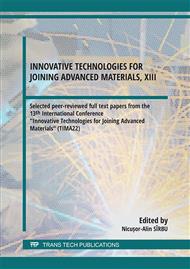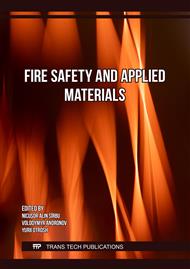p.11
p.17
p.25
p.35
p.43
p.51
p.61
p.69
p.83
CFD Simulation Study for Abrasive Waste Management Using Water Eductors for Abrasive Waterjet Cutting Collector Tanks
Abstract:
The work is mainly aimed at solving technical problems in the field of unconventional fluid-jet processing, a field in which ISIM Timisoara has developed technical and technological expertise. A crucial part of an effective cleanup process is the secure transportation and disposal of sludge-type materials and related clean-up waste in the industry to a designated site and then to waste treatment plants, as ecological regulations continue to evolve. As a result, experts strive to discover the most state of the art and effective methods for storing and cleaning produced waste.The technical solution studied in this paper consists in obtaining an efficient system for the evacuation of the waste water and abrasive mixture, elements generated during abrasive waterjet cutting, in the shortest time, without stopping the technological cutting process.In this sense, a water eductor system is studied, by carrying out a preliminary experimental program, for use in abrasive waterjet installations collector tanks, by CFD simulation process.The operating parameters of eductor-type mixing nozzles and their effect on the liquid abrasive mixture in a tank of an abrasive-water jet cutting system were analysed.
Info:
Periodical:
Pages:
43-49
Citation:
Online since:
August 2023
Price:
Сopyright:
© 2023 Trans Tech Publications Ltd. All Rights Reserved
Share:
Citation:



